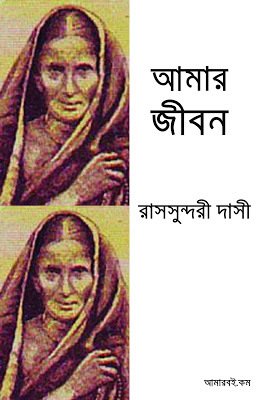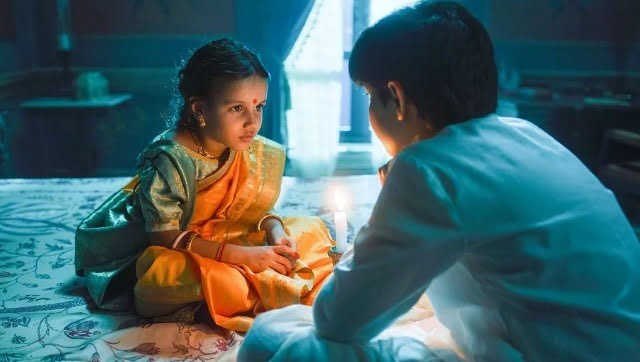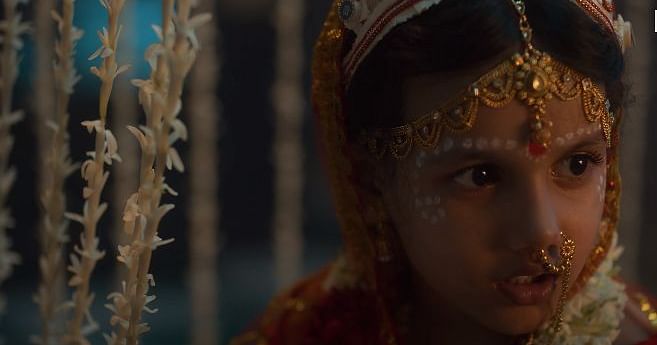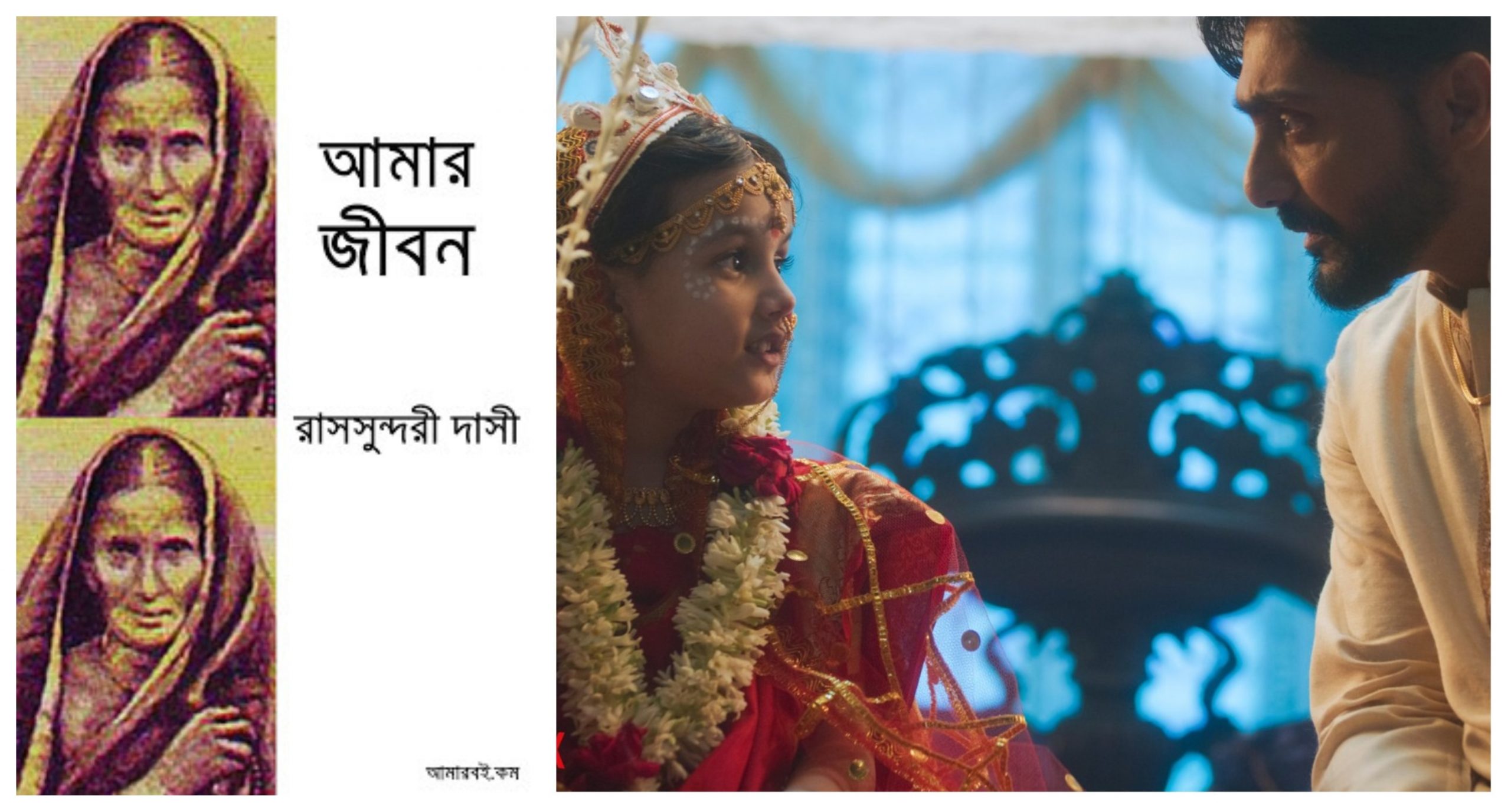Spoilers ahead for both Bulbbul and Amar Jiban.
Representation of women and queer subjects in the cultural imaginary grapples with several challenges, as the power dynamics controlling the production of history, silence, obfuscate and sometimes force into oblivion, narratives by these subjects. Thus, a reinterpretation and expansion of history is necessary to destabilize cultural certainties which erase the voices that threaten and expose the order of things. Remediation, in theory around media attributed to Bolter and Grusin, is the process of making narratives move from one medial form to another, and Netflix’s much talked about Bulbbul, might have remediated, and rescued from popular oblivion, the voice of the child bride.
In this regard, a comparison of the Anvita Dutt directorial with the first published autobiography in the Bengali language, Amar Jiban (1868) by Rashsundari Debi becomes particularly significant. While it has been sufficiently pointed out that Bulbbul is not unproblematic in its politics and its depiction of violence, this article attempts to alternatively read the film as a cultural text that brings back the cultural memory of the child bride.

The two works are vastly different in terms of genre and content—Bulbbul is a supernatural thriller and a tale of destructive anger against patriarchal and paternalistic control, while Amar Jiban is a life-narrative, which sheds light on the banal life of a bride, and her domestic existence in a patriarchal household. However, both articulate the anxieties and struggles of a newly married juvenile, female subject in Bengal in the nineteenth century, and the similarities are hard to overlook for someone familiar with both works.
The two works are vastly different in terms of genre and content—Bulbbul is a supernatural thriller and a tale of destructive anger against patriarchal and paternalistic control, while Amar Jiban is a life-narrative, which sheds light on the banal life of a bride, and her domestic existence in a patriarchal household. However, both articulate the anxieties and struggles of a newly married juvenile, female subject in Bengal in the nineteenth century, and the similarities are hard to overlook for someone familiar with both works.
Rashsundari was married at twelve to Sitanath Ray, who belonged to a rural, affluent and orthodox family, and her discomfort and lack of companionship becomes increasingly palpable as one reads through the autobiography. She weeps in the palanquin, and then on the boat, as she is headed for her marital home. In the household, she is burdened with domestic responsibilities, has no substantial camaraderie and yearns for her natal home.
Bulbbul’s discomfiture as she is carried to her new household in a palanquin is thinly veiled, and with the exception of Satya, her brother-in-law, of her age, she finds no companion in a dreary, alienating setting that consistently burdens her with oppressive constructs of femininity and propriety. Satya is sensitive to Bulbbul’s anxieties and suggests painting the house where they meet and write—blue, like her natal home.

Another similarity is the concern with transgressive acts of reading and writing, and documenting one’s story. Rashsundari transgresses by learning to read and write, and then records her strategies of deception in the household, as well as her making sense of things around her. Bulbbul transgresses by not only pursuing a camaraderie with Satya, but by also co-authoring a document with him, the discovery of which even as it burns, leads to brutal violence at the hands of Bulbbul’s husband.
Also read: How Is The Representation Of ‘Chudail’ In Bulbbul Different From Bhool…
A third resonance is the presence of divine intervention in both narratives. Rashsundari Debi credits her aspiration to literacy to God’s will, as she bases her desire to read upon having a dream about reading a sacred text in the Vaishnav tradition. By using an idiom of devotion, Rashsundari Debi makes her agential transgressions seem as acts of divine work.
Bulbbul, in the aftermath of brutal sexual violence that leads to her death is reanimated by an image of the goddess Kali, and is referred to as ‘devi’ by multiple characters in the film, who witness her hunting men. Her inverted feet happen to be a result of the violence on them and their subsequent treatment, and her tree-climbing prowess is rooted in her childhood, where she deftly climbed trees while playing with Satya, and yet, the supernatural overtones are presented with explicit clarity.
Another similarity is the concern with transgressive acts of reading and writing, and documenting one’s story. Rashsundari transgresses by learning to read and write, and then records her strategies of deception in the household, as well as her making sense of things around her. Bulbbul transgresses by not only pursuing a camaraderie with Satya, but by also co-authoring a document with him, the discovery of which even as it burns, leads to brutal violence at the hands of Bulbbul’s husband.
Both these works, revolving around a set of similar concerns humanize the under-represented subjectivity of the child bride in historical narratives, and flesh out the violence of a patrilocal, patriarchal household which hides its ravages with instrumental power and material adornments. Rashsundari writes, “I have been imprisoned within this household. There will be no release for me till the end of my days,” and details the pain and claustrophobia in her gestures of compliance with the norms of the household.

Bulbbul with two graphic scenes of overt violence on the protagonist, also captures the everyday, seemingly non-violent oppressions of the order in the household—Binodini, Bulbbul’s scheming, jealous sister-in-law, an apologist of the patriarchal order, in one scene, suggests Bulbbul to pick jewellery for herself and appear like the “badi bahu” of the household, an imposition Bulbbul is not comfortable with and defers.
In another scene, after Bulbbul has been raped by Mahendra, her brother-in-law, Binodini, emphasising the necessity to maintain “badi haveli ke bade raaz” (the big secrets of the big mansion) goes on to dress her up in silk and jewellery and asks her to keep quiet, for being a bahu in the household of the thakur gets her material benefits and “izzat” (respect).
Also read: Netflix’s Bulbbul Review — A Feminist Fantasy Or A Feminist Failure?
It is noteworthy that while Amar Jiban is an iconic and canonical text, it is one narrative by a child bride, while numerous others stay submerged and unlocated, and most importantly, undocumented. Bulbbul, albeit, not unproblematic as a ‘feminist’ tale, suitably renders the historical subject it seeks to tell a story about, remediates, and brings to our screens, the often-forgotten voice of the child bride, that Rashsundari Debi brought to cultural consciousness with the writing and publication of her autobiography. Perhaps, Bulbbul, as a cultural text, might urge one to go back and look for voices silenced by and lost in history.
Abhinav Bhardwaj is a final year undergraduate student of English Literature at Hindu College, University of Delhi. A published poet and researcher, his areas of interest include world literatures and queer theory. You can find him on Instagram.





A very well put article!